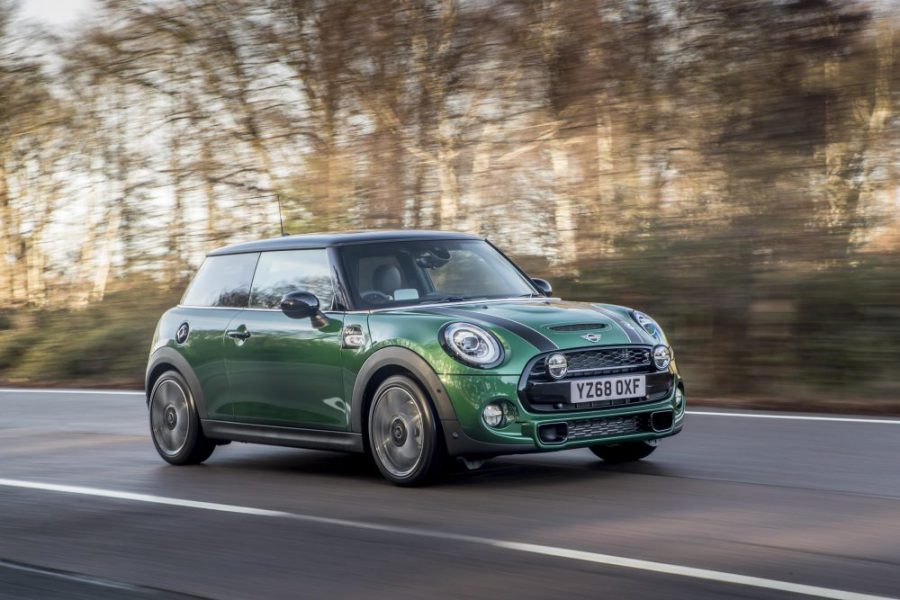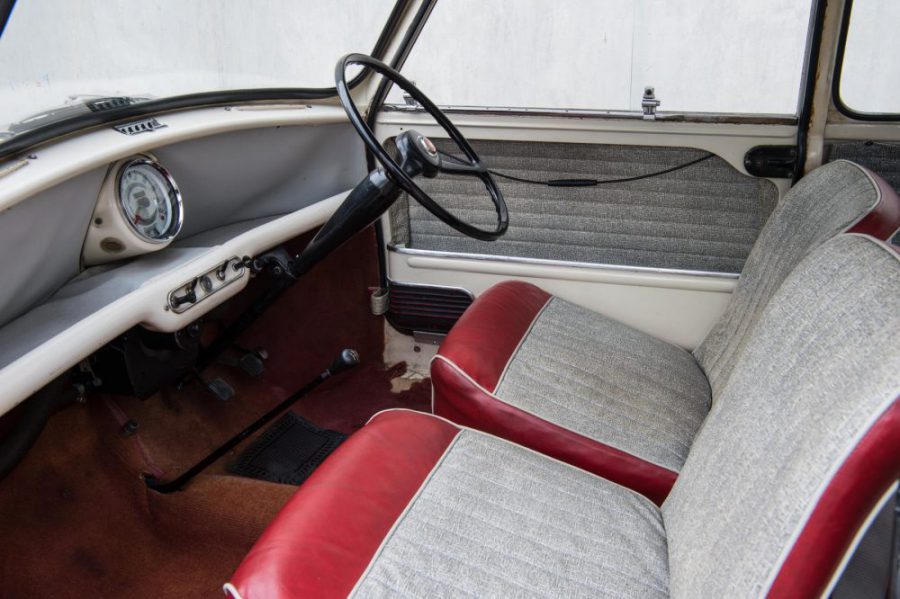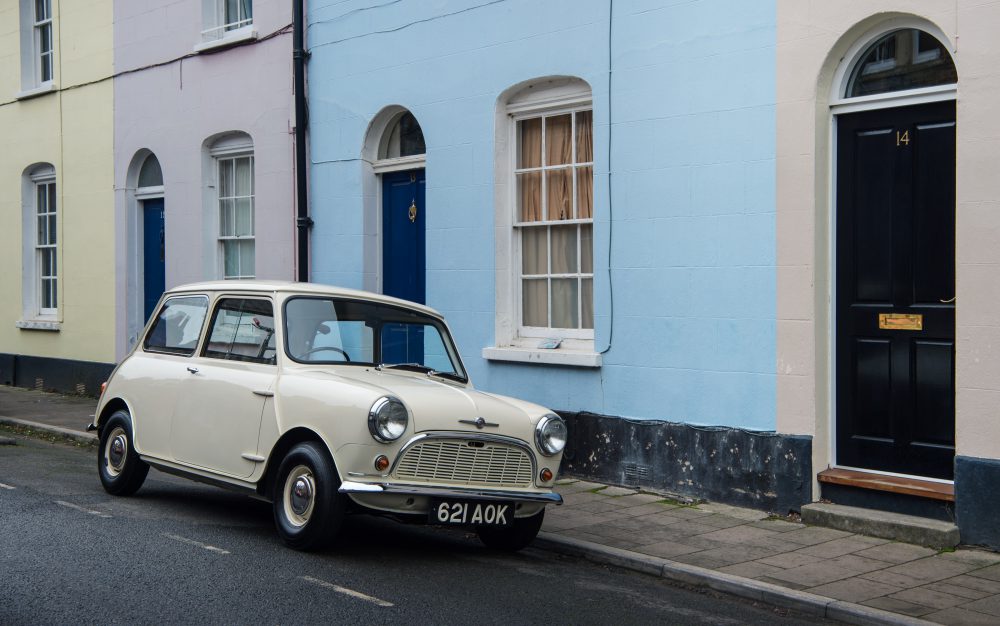
If you’ve decided 2020 is the year you’ll upgrade your motor, you could be in for a nice surprise. On paper, cars might look scarily expensive. But they’re actually more attainable for most of us than they’ve ever been. And new research suggests they offer better value for money too.
When we buy a modern car, there’s a very good chance it’ll be safer, comfier, more reliable, better equipped, more environmentally friendly and use less fuel than its equivalent from previous decades.
Car maker Mini has found proof of how the real cost of cars hasn’t really increased over the last 60 years, despite dramatic improvements in technology.
The cost of cars in 1959
Mini’s research found that the average price of a family car in 1959 was £780. Adjust that for inflation and the figure is the equivalent today of £16,784. But 60 years ago, the average wage was £595 or £12,803 in today’s money. More importantly, the cost of the car came to 307 per cent of the average family’s disposable income.

What did cars have back then?
Look at the Mini of 60 years ago and you’ll see a motor that is basic at best. There are certainly no luxuries such as air conditioning and satellite navigation was way in the future. Neither are features such as seatbelts, ABS anti-lock brakes or power steering present. And while we take electric windows for granted today, the first Mini had sliding panes of glass; storage bins in the door meant there wasn’t room for a window winding mechanism.
What do cars cost now?
According to Mini the average cost of a new car today is £18,139. But the UK’s average wage has grown to £28,189. And the price of a car is 88 per cent of the general household’s annual disposable income – just over a quarter (29 per cent) of what it was in 1959.
What do cars have now?
Today’s three-door Mini hatchback costs £16,195 and appears better value for money as it’s packed with standard equipment. There are eight airbags plus ABS and Autonomous Emergency Braking and of course all four seats have seatbelts. If the car is involved in a crash, its doors automatically unlock and the fuel pump shuts down. It has bright LED lights front and rear, rain sensing windscreen wipers, a 6.5-inch in-car screen, and a DAB radio plus Bluetooth for linking your mobile phone to the car.
How unreliable were cars in 1959?

Aside from the amount of equipment on a modern car compared to its ancestor, the motors we buy nowadays have other benefits. Barring the odd exception, they’re more comfortable and more reliable than their predecessors. Production techniques have improved meaning cars are better built so last longer. Some components that used to be mechanical and would need adjusting and wear out are now electronic. Tyres too are stronger and some even self-seal if they get a small puncture.
How unsafe were cars 60 years ago?
In 1959, there were 6520 road deaths in the UK as a result of road traffic accidents. According to the Department for Transport, the most recent figure was 1782 (from 2018). Of course some of this is because speed limits are more rigorously enforced now. And serious measures have been taken to slow traffic around town centres and schools. But much of the reduction in fatalities will be because today’s cars are stronger and boast far more in the way of life-saving technology.
Compared to their predecessors, Mini’s findings suggest modern cars really do represent better value for money.
The difference, in terms of the percentage of annual income, is amazing.
Well argued and good conclusions. The only additional comment I’d make is that the average incomes comparison hide those that are in low incomes including the retired. The post Covid picture in the UK will surely see average income fall (we are already seeing that happen eg redundancies, new contracts). Are new cad prices falling to match ?
I own a modern car with all the latest gadgets but one thing I do miss about the old cars is being able to service and fix them yourself. Gone are the days when you could push the car down the hill and let the clutch out if you had a flat battery 🙂
Without doubt. But they are so boring to look at and to drive give me a classic any day. I can repair it myself with a broken screwdriver and rusty hacksaw blade. No electronics to go wrong. Keep the points set correctly and the carburation below 4% and you should have no problems
I had a mini just like the one illustrated in this article, it was fabulous.
Unfortunately the financial comparisons don’t stack up for me and many other pensioners like myself on less than half the average wage
I owned several early minis and one of their biggest failings was their aversion to wet weather. If you ventured out and the rain started you either had to wait for the ht leads etc to dry or spray copious amounts of WD40 and hope it would start up again. Happy days!!!
How many rusty cars do you see on the roads today compared with cars from previous generations?
The biggest improvement is in anti perforation treatments that prevent the rust buckets we had on the roads previously.
To me and many others a car is to get from A to B. Dont need electric windows and all the modern gadgets. The old Mini was great but the new Mini is very expensive so something like a Dacia to me is good value and does the job.
Colin Steed
There are some ways I agree that cars are better value now especially when it comes to safety but when they go wrong most of the time you cannot replace the actual part that has worn out, you have to replace the whole assembly which the part is in at least with the older car you can literally strip an engine down to replace practically any part providing you can find an actual mechanic who knows how to do this, you don’t need that sort of experience nowadays. My 1984 2.8i Capri needs a Mechanic (which I have ) if at any time she has problems (which is very rare) and I have found her more reliable than any of the cars my family have (this includes a Volvo and an Audi)
It’s a shame that you chose the Mini for comparison: Not only are they totally different cars but made by a different manufacturer. The “new” Mini is, in fact, a small BMW that just happens to look a little like the original Mini. Having had experience of both, I can say that the new BMW Mini is too complicated, too heavy and too expensive. But it IS a BMW!
Totally agree with Mr. Jones. Just sold a beloved older mini in favour of a used 2019 mini. Well it has all the bells and whistles on it, but its not a mini its a BMW now. The Satnav doesn’t work on post codes, its over complicated and why do we need coloured lights on the display screen changing colour – distracting and unnecessary. It has taken away the pleasure of driving because it does everything for you. That’s progress I suppose.